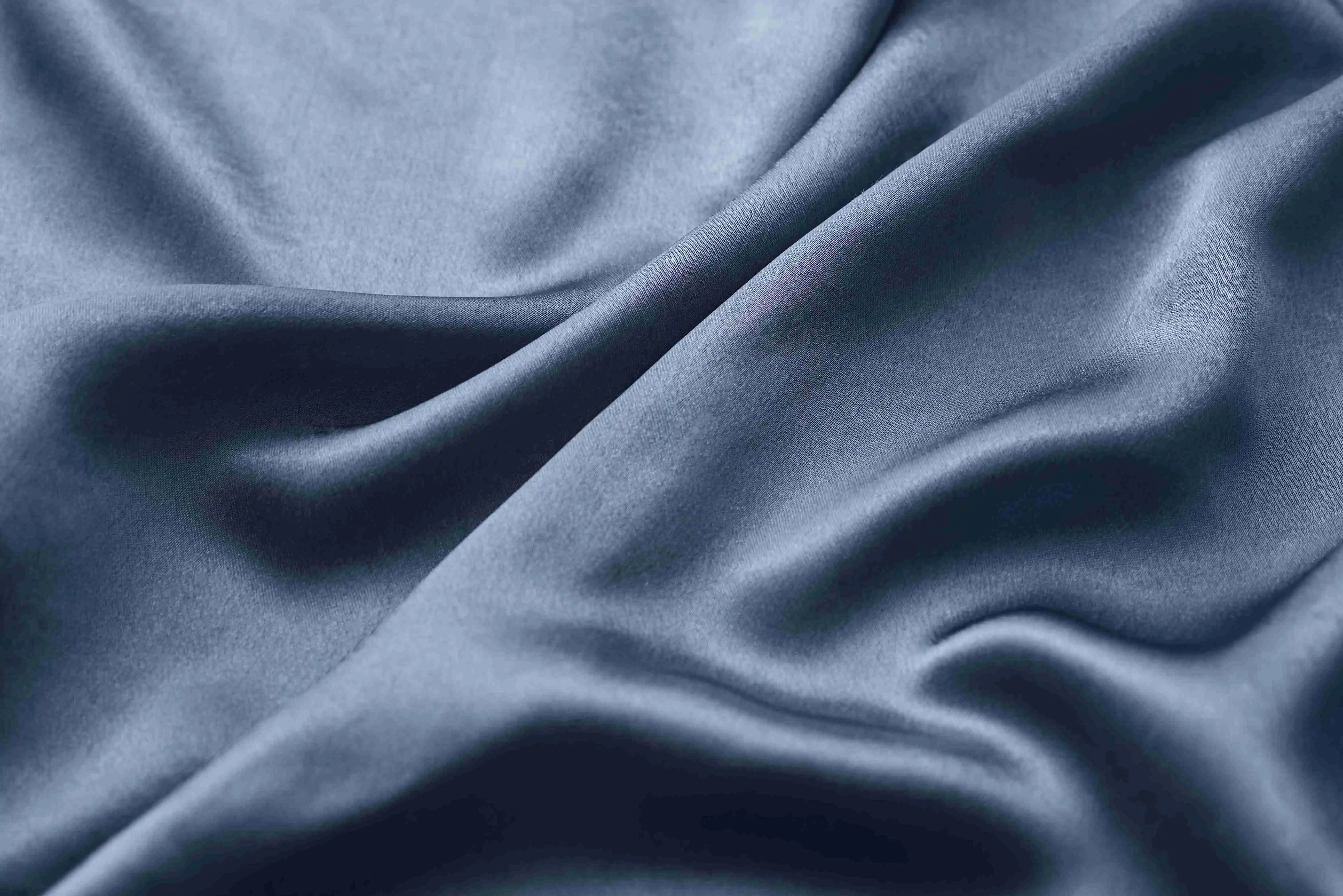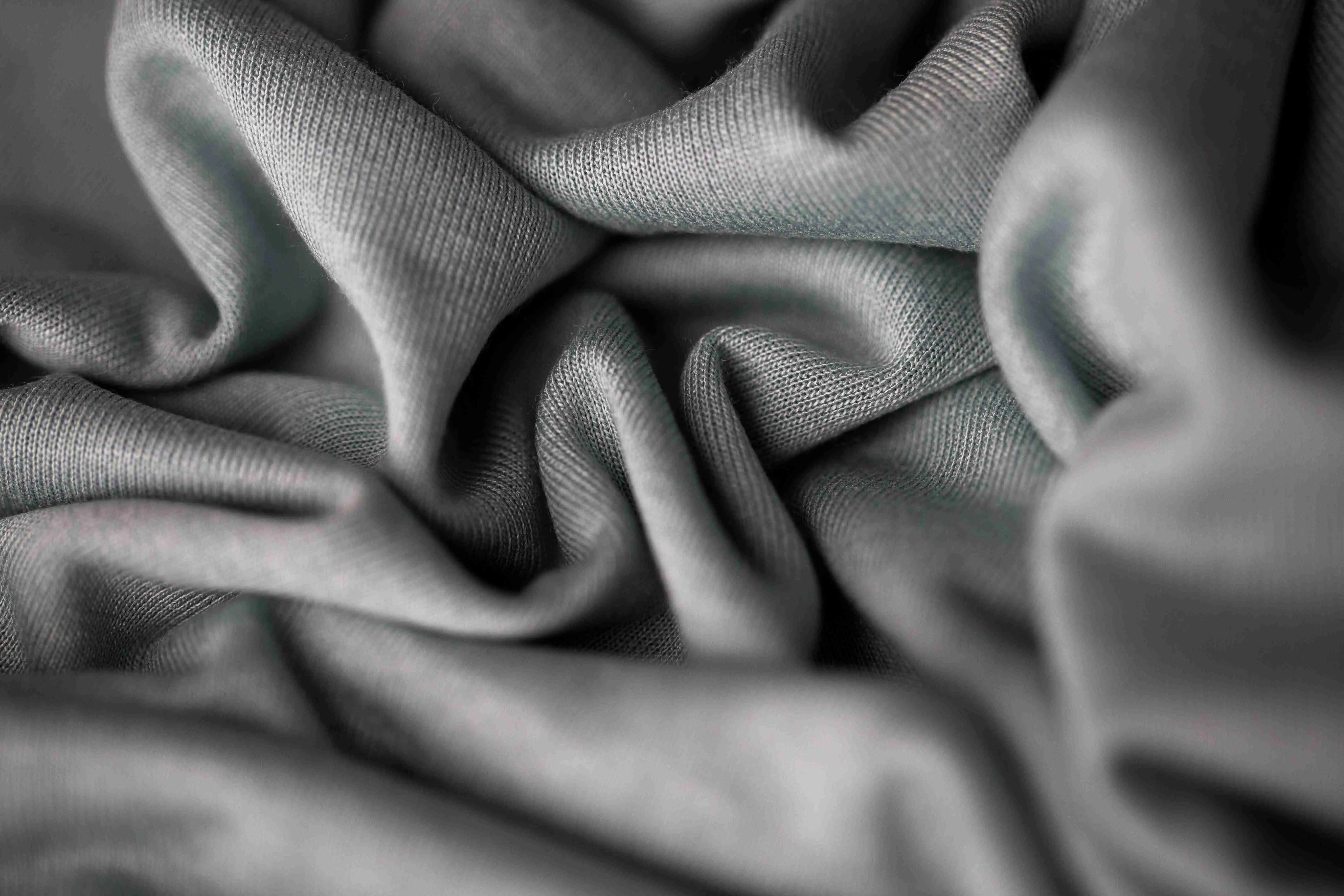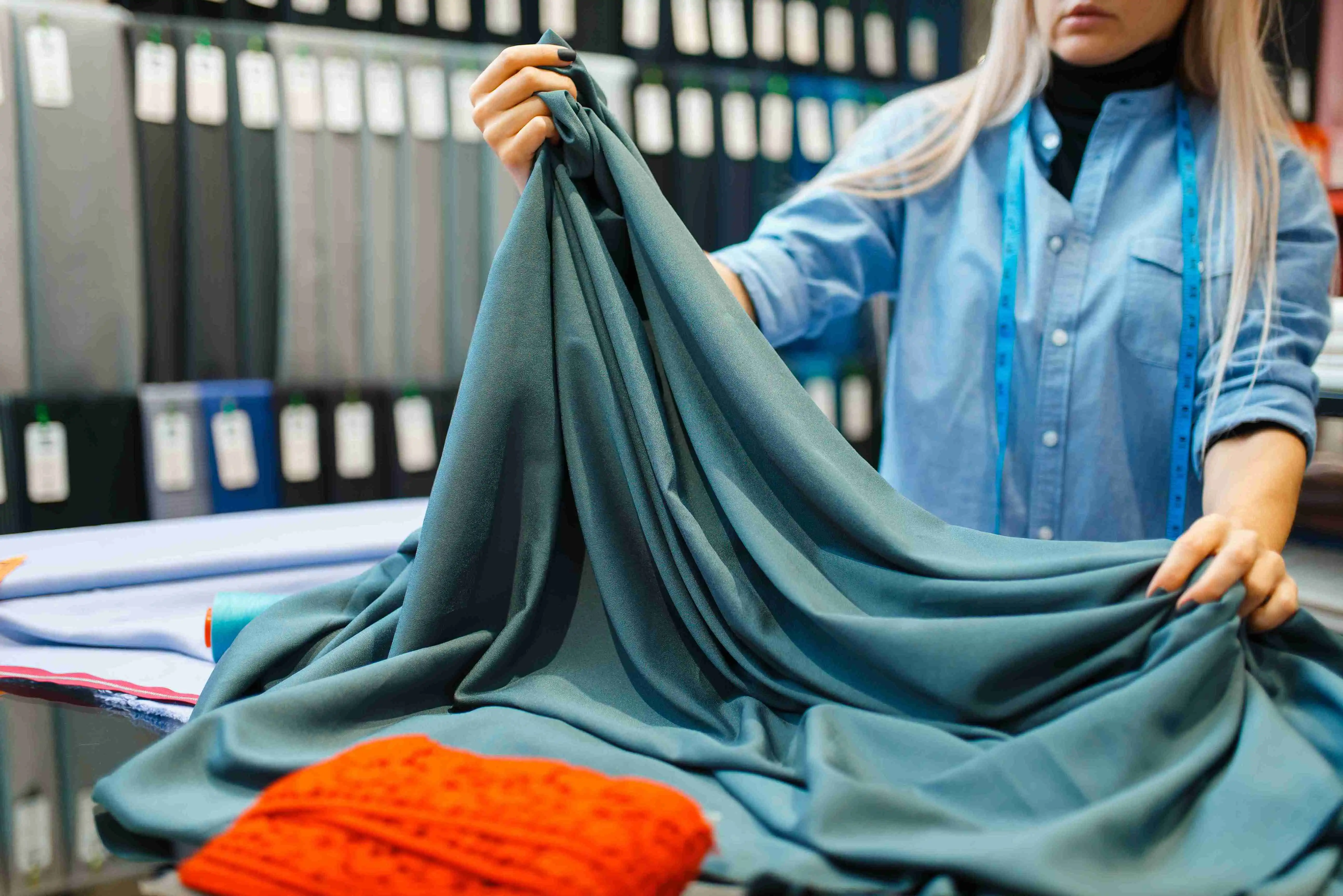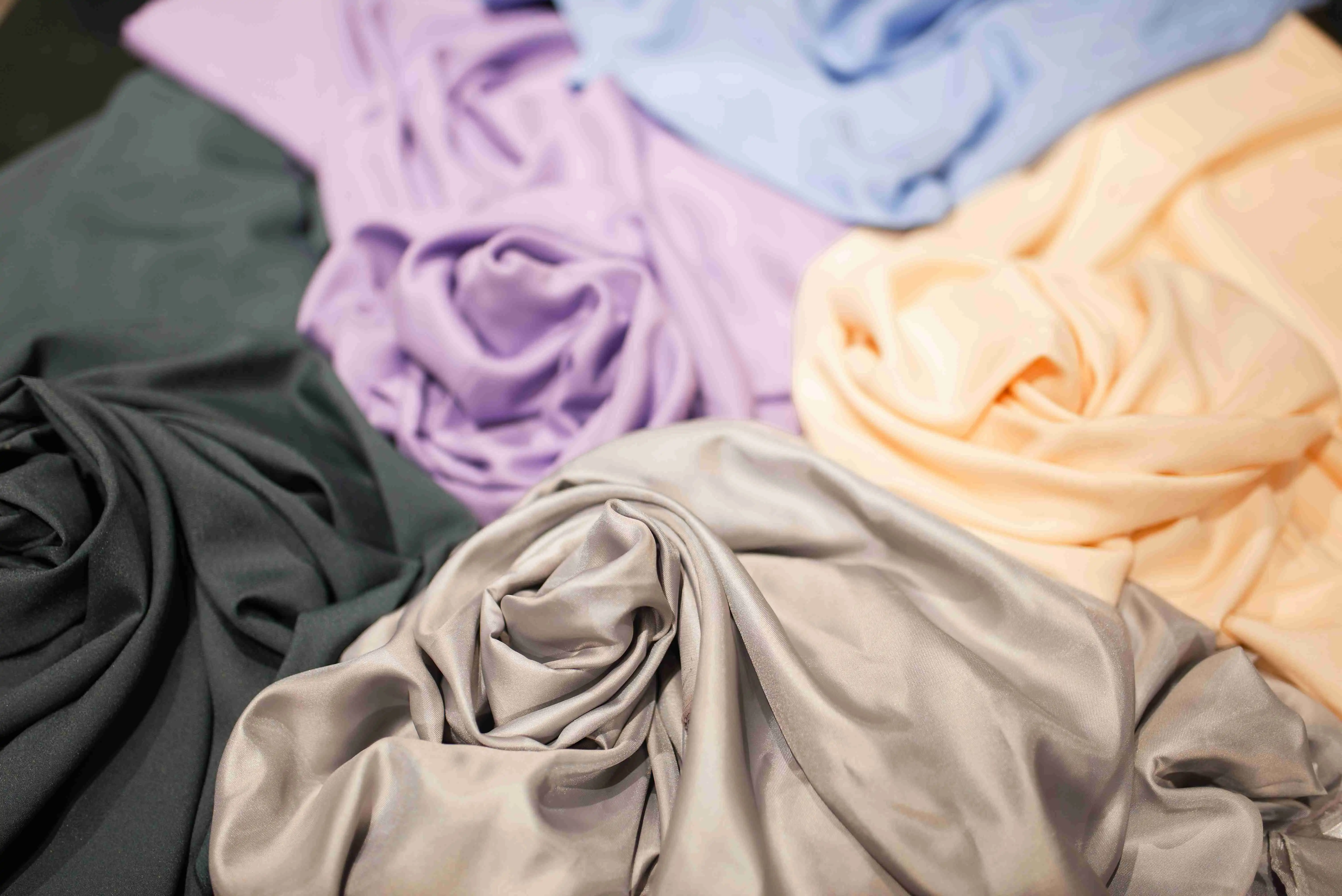Viscose is a type of fabric that has gained popularity in the fashion industry due to its versatility and affordability. It is a man-made fiber that is derived from natural materials such as wood pulp or cotton linters.
Viscose is known for its soft and smooth texture, making it a preferred choice for clothing, home furnishings, and even industrial applications. In this article, we will explore the various characteristics and uses of viscose, shedding light on why it has become a staple in the textile industry.
What Is Viscose Fabric?

Viscose, also known as rayon, is a type of textile that is made from regenerated cellulose fibers. It is derived from natural sources such as wood pulp or bamboo.
Viscose fabric is known for its soft and smooth texture, making it a comfortable choice for clothing, fast fashion, and home furnishings. It has a versatile nature and can be easily blended with other fibers like cotton or polyester to enhance its properties.
How Viscose is Produced And What is Viscose Made From
Step 1
The first step is to break down the cellulose into its fibers, which can be done through a chemical process called pulping.
The pulping process involves boiling the wood or plant material in a solution of sodium hydroxide and sodium sulfide, which helps to dissolve the lignin and remove impurities. The resulting pulp is then washed and bleached to further purify it.
Step 2
Once the cellulose has been extracted and purified, it is dissolved in a solution of caustic soda (sodium hydroxide) to create a viscose solution. This solution is then aged for a period to allow the cellulose to fully dissolve and for any air bubbles to escape.
The viscosity of the solution is carefully monitored during this aging process to ensure that it is suitable for spinning into fibers.
Step 3
After aging, the viscose solution is filtered to remove any remaining impurities or undissolved cellulose particles. The filtered solution is then forced through spinnerets, which are small holes or slits that are used to extrude the viscose into long filaments.
These filaments are then solidified by passing them through a bath of sulfuric acid, which causes the cellulose to coagulate and form solid fibers.
Step 4
The solidified fibers are then washed and treated with additional chemicals to improve their strength, durability, and dyeability. Finally, the fibers are dried and cut into the desired lengths before being packaged and sent to textile manufacturers for further processing.
Properties of Viscose Fabric
Viscose fabric offers a range of desirable properties that make it a popular choice. It provides a luxurious feel against the skin, while its breathability ensures optimal air circulation and temperature. Viscose fabric combines functionality with comfort, making it a versatile and sought-after material.
Softness and Comfort
When compared to other fabrics, such as polyester or nylon, viscose fabric offers a luxurious and silky feel against the skin. This makes it a preferred choice for clothing items like dresses, blouses, and skirts, as it provides a high level of comfort and allows for easy movement.
Breathability
Viscose fabric is highly breathable. It can allow air to circulate through the fabric, which helps to regulate body temperature and prevent overheating.
This is particularly advantageous in warm climates or during physical activities when excessive sweating may occur. The breathability of viscose fabric ensures that the body remains cool and comfortable throughout the day.
Lightweight and Drapeable
The lightweight nature of viscose fabric makes it a popular choice for summer clothing, as it allows for breathability and comfort.
Additionally, its drapeable quality gives bedsheets a flowing and elegant appearance. Viscose fabric has a smooth and soft texture, making it pleasant to wear against the skin.
Absorbent
Viscose fibers have the ability to absorb moisture, making them an ideal choice for clothing items like towels, bathrobes, and bedding. The absorbency of viscose fabric allows it to quickly wick away sweat or water from the body, keeping the wearer dry and comfortable.
Types of Viscose Fabric

There are several types of viscose fabric available, each with its own unique characteristics and properties. These fabrics offer a range of benefits such as softness, breathability, moisture-wicking properties, and sustainability.
Bamboo Viscose
Made from the cellulose fibers of bamboo plants, this fabric is known for its exceptional moisture-wicking properties and antimicrobial qualities. It is also highly sustainable and eco-friendly, as bamboo is a fast-growing and renewable resource.
Check out our list of the Top-Rated Bamboo Sheets.
Eucalyptus Viscose
Eucalyptus viscose, also known as Tencel or Lyocell, is a fabric made from the cellulose extracted from eucalyptus trees. Eucalyptus viscose is known for its silky texture, excellent drapeability, and breathability. It is also biodegradable and has a low environmental impact, making it a popular choice among conscious consumers.
High Wet Modulus (HWM) Viscose
HWM viscose stands for High Wet Modulus viscose. It is a type of viscose fabric that has been treated with special chemicals to increase its strength and durability.
HWM viscose is often used in applications where the fabric needs to withstand repeated washing or heavy use, such as in upholstery and drapery. It has a higher resistance to stretching and shrinking compared to regular viscose fabric.
Polynosic Viscose
Polynosic fabric is another viscose blend that is known for its luxurious feel and excellent moisture management properties. It is made by blending polyester and rayon fibers, resulting in a fabric that combines the best qualities of both materials. Polynosic fabric is often used in high-end clothing and bedding due to its superior comfort and durability.
Modal
Modal is a type of viscose fabric that is known for its exceptional softness, smoothness, and drape. It is made from beechwood cellulose, which undergoes a specific manufacturing process to create the modal fibers. Modal fabric has excellent color retention and resists pilling, making it a popular choice for clothing that requires frequent washing.
Cupro
Cupro, also known as cuprammonium rayon, is a type of viscose fabric that is made from the cellulose fibers of a cotton linter. It has a luxurious feel and a silky appearance, making it ideal for high-end clothing like evening gowns and lingerie. Cupro fabric is also highly breathable and has good moisture absorption properties, making it comfortable to wear in warm weather.
Pros of Viscose Fabric
Viscose fabric offers several advantages that make it an attractive choice in several industries; also, these advantages have made viscose fabric increasingly popular among both manufacturers and consumers alike.
Soft
One of the key advantages of viscose fabric is its softness. It is incredibly smooth to the touch, providing a luxurious feel against the skin.
The fabric's softness makes it highly desirable for clothing items such as dresses, blouses, and sleepwear, where comfort is of utmost importance. The viscose fabric's softness also adds to its overall appeal and enhances the wearer's experience.
Affordability
Compared to other natural fibers like silk or wool, viscose fabric is relatively inexpensive to produce, making it a cost-effective option for both manufacturers and consumers.
Its affordability allows for a wider range of products to be made using this fabric, making it accessible to a broader population. This affordability factor also makes viscose fabric an excellent choice for those looking for quality textiles at a reasonable price.
Breathable
This breathability makes it an ideal choice for warm weather or humid climates, as it helps regulate body temperature and prevents overheating. The fabric's breathability also makes it suitable for athletic wear or active clothing, as it helps wick away moisture and keeps the wearer cool and comfortable.
Moisture Wicking
This means that the fabric can absorb moisture away from the body, keeping the wearer dry and comfortable. This is particularly useful in hot and humid climates or during intense physical activity when sweating is inevitable.
The moisture-wicking feature of viscose fabric allows it to quickly evaporate the moisture, preventing it from sticking to the skin and causing discomfort.
Durable
Although it may not be as strong as some other natural fibers, proper care and maintenance can significantly extend its lifespan. With the right washing instructions and handling, viscose fabric can retain its shape and color for a long time, making it a durable option for everyday use.
Lightweight
Viscose fabric is lightweight, making it ideal for clothing items that require fluidity and movement. The lightweight nature of this fabric allows for comfortable wear without feeling weighed down. Whether it's a flowing summer dress or a lightweight scarf, viscose fabric's lightness adds to its versatility and makes it suitable for a wide range of garments and accessories.
Cons of Viscose Fabric
Viscose fabric, despite its popularity for its silky appearance and affordability, does come with a few drawbacks.
Prone to Shrink
One of the major cons of viscose fabric is its tendency to shrink when exposed to water or high temperatures. This can be a significant inconvenience for those who prefer low-maintenance fabrics, as it requires extra care during washing and drying to prevent shrinkage.
Prone to Wrinkle
Viscose fabric is notorious for wrinkling easily. This means that garments made from this fabric may require frequent ironing or steaming to maintain a polished and wrinkle-free appearance.
Hard to Maintain
Unlike other fabrics, viscose requires delicate handling and special care during washing and drying. It is prone to shrinkage and can easily lose its shape if not handled properly. This makes it a less practical choice for everyday wear, as it requires extra time and effort to maintain its appearance.
Flammable
Unlike natural fibers such as cotton or wool, viscose fabric is highly flammable and can easily catch fire. This poses a safety risk, especially when wearing viscose garments near open flames or in environments where fire hazards are present. Therefore, extra caution must be exercised when handling and wearing viscose clothing.
Susceptible to Mildew
Viscose fabric is susceptible to mildew growth if not properly cared for. It is important to keep this fabric dry and well-ventilated to prevent the growth of mildew, which can cause an unpleasant odor and damage the fabric. Regular cleaning and proper storage are necessary to avoid mildew formation on viscose garments.
Not Eco-Friendly
Viscose is made from wood pulp, which involves a chemically intensive manufacturing process. The production of viscose could be considered environmental pollution because of the harmful pollutants it releases, including carbon disulfide, a toxic chemical. Additionally, the large amount of water used in the production process further contributes to environmental degradation.
Common Uses of Viscose Fabric
Viscose fabric has numerous common uses across different industries. Its softness, breathability, and ability to hold vibrant colors make it a popular choice for clothing, home textiles, and fashion accessories. Whether it's a stylish dress or a cozy bedsheet, viscose fabric offers comfort, durability, and aesthetic appeal.
Clothing
Due to its soft and comfortable texture, viscose fabric is widely used for making shirts, skirts, dresses, and blouses. It drapes well and has a smooth, silky feel against the skin, making it a popular choice for both casual and formal wear.
Additionally, viscose fabric can also be blended with other materials, such as cotton or polyester, to enhance its durability and performance.
Home Textiles
Its smooth and breathable nature makes it perfect for making bed sheets, pillowcases, and curtains. Viscose fabric offers excellent moisture absorption and ventilation properties, ensuring a comfortable and cool environment in the bedroom.
Moreover, it is easy to dye and can be found in a wide range of colors and patterns, making it ideal for creating stylish and vibrant home decor.
Fashion Accessories
Viscose is widely used in the fashion accessories industry. Scarves, shawls, and hijabs made from viscose fabric are popular due to their lightweight and breathable nature. The fabric's ability to hold vibrant colors makes it an excellent choice for creating eye-catching accessories.
Additionally, viscose fabric is often used for making gloves, headbands, and even jewelry. Its versatility allows designers to experiment with different textures and finishes, resulting in unique and fashionable accessories.
How to Care for Viscose Fabric

It is important to care for viscose fabric properly to maintain its quality and prolong its lifespan. By following care instructions, you can ensure that your viscose fabric remains in excellent condition for years to come.
Washing Instructions
When it comes to washing instructions, it is recommended to hand wash viscose fabric in cold water with a mild detergent. Avoid using bleach or harsh chemicals as they can damage the fabric. Gently swirl the garment in the water and then rinse it thoroughly. If you prefer machine washing, use the delicate or gentle cycle with cold water.
Drying Tips
After washing, it is crucial to handle the drying process carefully to prevent any damage or distortion to the fabric. It is best to air-dry viscose fabric by laying it flat on a clean towel or hanging it on a clothesline. Avoid wringing or twisting the garment, as this can cause the fabric to lose its shape.
Direct sunlight should also be avoided, as it can cause fading. If you must use a dryer, choose the lowest heat setting and remove the garment while still slightly damp to prevent over-drying.
Ironing and Storage
Ironing viscose fabric requires some special attention as well. Set your iron to a low heat or synthetic setting and ensure that there is no steam. Place a clean cloth or a pressing cloth over the fabric to protect it from direct heat. Gently iron the garment in smooth, even strokes, avoiding any harsh pressure or dragging of the iron.
When it comes to storing viscose fabric, it is best to hang garments on padded hangers to prevent them from stretching or becoming misshapen. Avoid folding garments for long periods, as this can cause permanent creases. If you need to store viscose items in drawers or boxes, make sure they are clean and dry before placing them inside.
Viscose vs. Other Fabrics: How Does It Compare?
| Viscose | Cotton | Linen | Silk | |
|---|---|---|---|---|
| Durability | Viscose falls somewhere between natural and synthetic fibers. Viscose can withstand regular wear and tear and can be easily maintained with proper care. However, it is important to note that viscose is prone to wrinkling and can lose its shape over time if not cared for properly. | Cotton fabric is known to withstand wear and tear, making it a popular choice for clothing and household textiles. Its durability allows it to withstand frequent washing and maintain its shape and quality over time. | Known for its strength and resilience, linen is able to withstand the test of time, making it a popular choice for a wide range of applications. Whether used in clothing, home furnishings, or even industrial settings, linen is known for its ability to retain its shape and color, even with frequent use and washing. | Despite being lightweight and delicate in appearance, silk is surprisingly strong and resistant to wear and tear. This makes it an excellent choice for items that need to withstand regular use, such as clothing and bedding. |
| Breathability | Viscose has excellent moisture absorption properties, making it a suitable choice for warm weather or humid climates. Viscose allows air to circulate easily through the fabric, keeping the wearer cool and comfortable. This makes it an ideal choice for summer clothing or activewear. | cotton is highly breathable. This means that it allows air to circulate through the fabric, keeping the wearer cool and comfortable. The breathability of cotton makes it an ideal choice for clothing in hot and humid climates. It absorbs moisture from the body and allows it to evaporate quickly, preventing the buildup of sweat and odor. The natural fibers of cotton also have a high moisture-wicking capability, which contributes to its breathability. | Unlike other fabrics that can trap heat and moisture against the skin, linen allows air to circulate freely, helping to keep the body cool and dry. This makes it an ideal choice for warm weather clothing, as well as for bedding and towels. The natural absorbency of linen also helps to wick away moisture from the skin, further enhancing its breathability. | The fibers of silk are also highly breathable, allowing air to circulate freely and keeping the body cool and comfortable. This makes it an ideal fabric for warm climates or for individuals who tend to overheat during sleep. Additionally, silk has a unique ability to regulate body temperature, keeping the wearer warm in cold weather and cool in hot weather. |
| Comfort and Feel | Viscose is known for its smooth and soft texture. The fabric has a luxurious feel against the skin and drapes beautifully, making it a popular choice for clothing items such as dresses, blouses, and skirts. Viscose is also lightweight, which adds to its comfort factor. It provides a comfortable fit without feeling restrictive or heavy on the body. | The softness and smoothness of cotton fabric make it incredibly comfortable against the skin. It does not cause irritation or itchiness, making it suitable for those with sensitive skin. Cotton clothing provides a cozy and comfortable feel, making it a popular choice for loungewear and sleepwear. | The fabric has a unique texture that is both smooth and cool to the touch, providing a luxurious sensation against the skin. Linen also becomes softer and more supple with each wash, making it increasingly comfortable over time. Its natural fibers also provide a level of hypoallergenicity, | The comfort and feel of silk is unmatched by any other fabric. The smooth and soft texture of silk against the skin provides a luxurious and indulgent experience. Silk also has a natural sheen that adds elegance and sophistication to any garment. Furthermore, silk is hypoallergenic, making it a suitable choice for individuals with sensitive skin or allergies. |
FAQs
Is viscose fabric better than cotton?
Viscose fabric, also known as rayon, is a semi-synthetic material made from cellulose fibers. It is known for its skin-friendly properties, breathability, and drapeability. On the other hand, cotton is a natural fiber that is widely used for its durability and comfort. In terms of comfort, both fabrics are highly breathable and offer good moisture absorption. However, viscose fabric tends to have a silk-like feel, which can be more luxurious compared to the slightly rougher texture of cotton.
Is Viscose the Same as Rayon?
Viscose and Rayon are often used interchangeably, but they are not the same. Viscose is a type of rayon fabric. Rayon is a generic term used to describe a category of fibers made from cellulose. Viscose is made from wood pulp or cotton linters, which are treated with chemicals to create a viscous solution.
Does viscose fabric have a thread count?
Viscose does not have a thread count. Thread count refers to the number of threads per square inch in a woven fabric, but viscose is made through a different process. The process of making it involves chemically treating wood pulp and then extruding it into fibers. These fibers are then spun into yarns and used to create the fabric.
Are viscose bedsheets good for hot sleepers?
Viscose bedsheets can be a great choice for hot sleepers. Viscose, also known as rayon, is a breathable and lightweight fabric that allows for better air circulation, keeping you cool throughout the night. Its moisture-wicking properties help to absorb sweat and prevent it from clinging to your body, promoting a more comfortable sleep environment.
Is viscose sustainable?
While it is often touted as a sustainable alternative to other synthetic fabrics, its eco-friendliness is debatable. Viscose is made from wood pulp, which comes from trees. Deforestation is a major concern associated with the production of viscose fabric, as it contributes to habitat destruction and loss of biodiversity. Additionally, the process of converting wood pulp into viscose involves the use of chemicals and an energy-intensive production process.
Is viscose a natural fiber?
While viscose is often referred to as a "natural" fiber, it is technically considered a semi-synthetic fiber. This is because it undergoes a chemical process to convert the cellulose into a soluble compound, which is then spun into fibers. Although viscose is derived from natural materials, it does undergo significant processing and chemical treatment, which may affect its classification as a purely natural fiber.
Conclusion
Viscose is a widely used fabric that offers a range of benefits in terms of comfort, versatility, and affordability. Its soft and smooth texture makes it a popular choice for clothing and home furnishings. Additionally, its ability to blend with other fibers allows for enhanced performance and durability. However, it is important to note that viscose does have some drawbacks, such as its tendency to shrink and lose strength when exposed to moisture. Overall, viscose continues to be a favored fabric in the fashion industry, offering an attractive combination of style and affordability.
Dom Abraham
As the lead content writer at Sleepiverse. Dom pours his heart into writing mattress reviews, bedding product reviews, and medically-reviewed health articles. Dom is from Portugal and likes to spend his free time writing on the beach as it gives him a sense of comfort. Aside from writing mattress reviews in front of the soothing beach view, Dom likes to experiment with new amazing food ideas.


